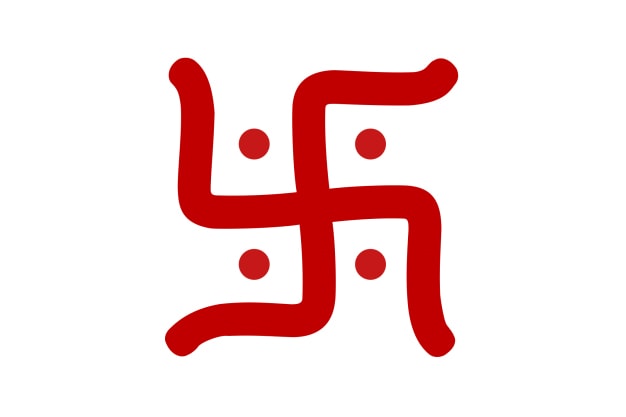
This article briefly explores the Swastika as a religious symbol often associated with the Indians but whose use and popularity sores beyond the geographical and theoretical boundaries of India and Indians. For instance, the symbol is commonly used, besides India, in many European cultures just before the dawn of Christianity and gained a notable upsurge in popularity during the 19th century. Quite possibly, the association of the symbol with auspiciousness, peace and good fortune endeared it to many audiences besides the initial cultural confines of ancient Indian religious rites and rituals.
Origin
The origin of this symbol is shrouded with uncertainty. Most accounts, though, treat it as part of cross symbols and have sought to cast the symbol alongside the cross in symbolizing the sun. Yet still, some accounts have pointed out the fact that the symbols four arms indicate the four key facets of nature. These are: the Sun, Wind, Water and Soil. Others still associate the four arms of the symbol with seasons. In this regard, each of the junctions (at 90 degrees) stands for equinoxes and solstices. According to Hinduism, the symbol represents the Universe as positioned on Lord Vishnu’sfinger.
On the other hand, Reza Assassi posits that the symbol is the same as the Mithra symbol which was common in Iran and represented some geometric pattern. Conversely, Carl Sagan’s works tend to emphasize that the symbols four bent arms of the Swastika are akin to the four tails of some comet. On the Indian front, Alexander Cunningham associated the use of the Swastika among the Buddhists with the abbreviation resulting from a number of characters in Brahmi which form the word Su Asti.
Description & Usage
This is religious symbol is considered to be more than 11,000 years old. It is principally associated with Indians in their worshipping acts in religions such as Hinduism, Buddhism and Jainism. The symbol is a simple equilateral cross designed with attached ‘legs’ each positioned or bent 90 degrees. The symbol’s name is derived from the Sanskrit phrase, ‘svastika’ which has to do with good luck and or an object with an inherent ability to bring good luck or fortune. Other names that have been used to refer to this symbol include, but not limited to, Hakenkreuz, fylfot, gammadion cross among others.
The use the phrase, ‘gammadion cross’ is common only in Western application. This is attributed to the appearance of the symbol which resembles four Greek letters when they are fastened to each other in some specific manner. Notably, the use of the Swastika was widespread during the Nazi regime in Germany during the period leading to the Second World War. As a result, the Symbol gained notoriety which would later bear stigmaticconnotations for its use during Nazism. In other words, most Western nations began to abhor the Symbol for having been intensively used by the German Nazism.
The chiral symmetry of the symbol, or lack thereof, has led to various formations and depictions of the symbol. Often, the symbols crosses may be left-facing (where each bent is faces left) and right-facing (each bent faces right).Both can respectively be termed as being left-hand or right-hand. These variations in forms of the symbol have resulted in the coining of a slightly different name for the left facing symbol and have been appropriately termed ‘Sauwastika’ or in other contexts, ‘Sauvastika’. The left facing Sauwastika is a notable character in the Sanskrit and has additionally found its way to the Chinese and Japanese languages.
Conclusion
The Swastika and its use both in the past and modern day have been shrouded in some significant level of mystery. For instance, the manner in which the symbol found its way out of the ancient India to the Americas and Europe (where it is used in various derivative cruciform) is baffling. The Indian IIT-Kharagpu has however made commendable strides tracing the footprints of the symbol as it wove its way around the world. Through close and careful scrutiny of seals, imprints of various cultures and arts, dating of the diverse religious symbolism of various cultures, a logical geographical claim has been reached by the IIT-Kharagpu that the real home of the Swastika is India.

